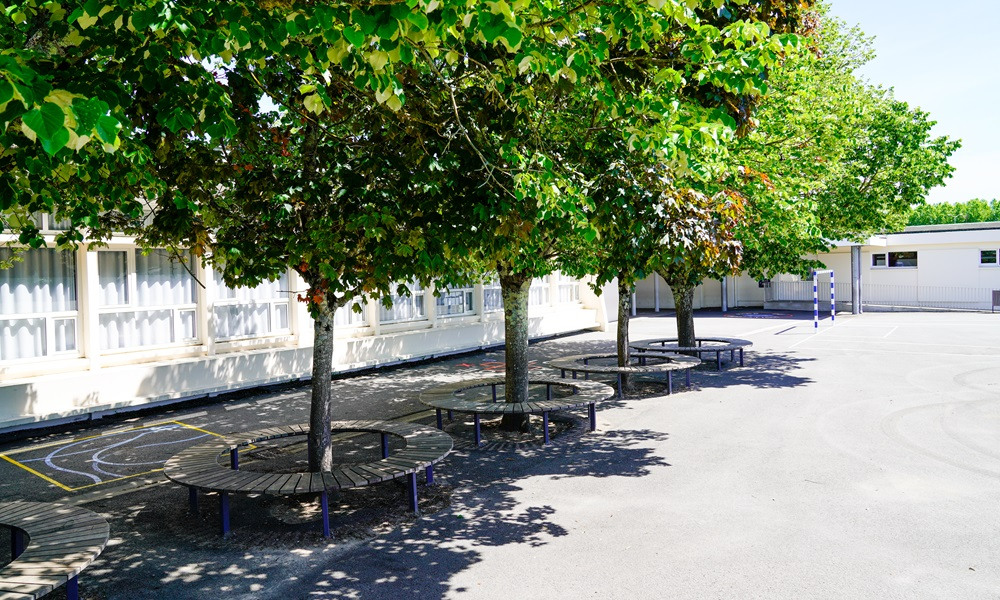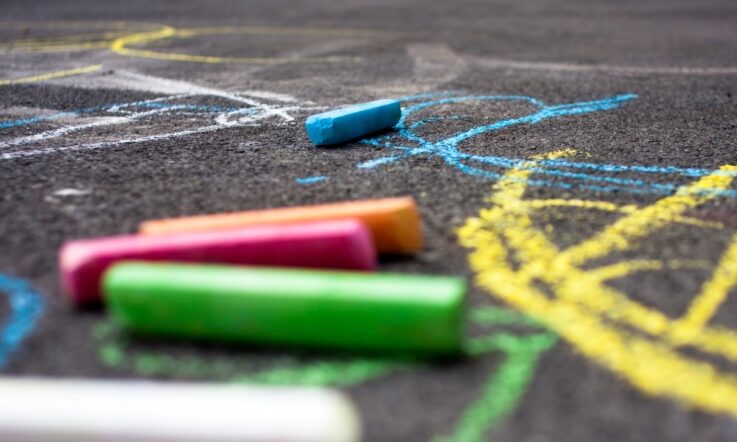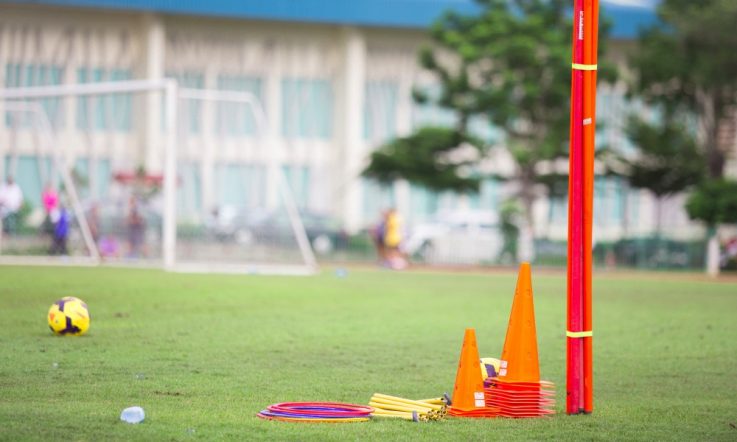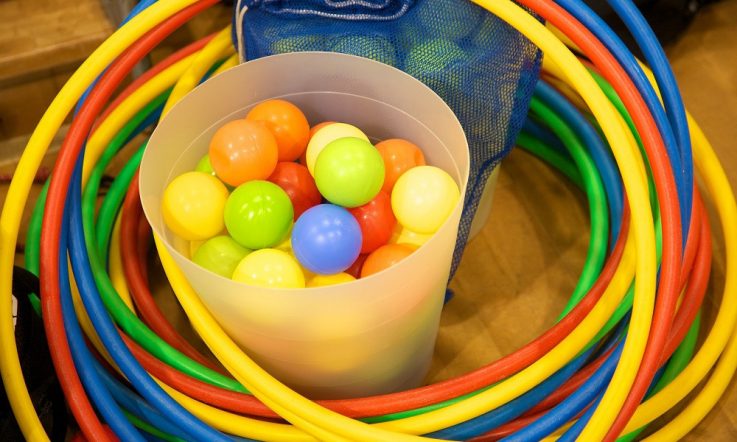Hello, Dominique Russell here from Teacher magazine and before we get into today’s episode, I wanted to share some exciting news: Little J & Big Cuz is nominated for Best Children’s Program in the 2025 Logies! This beloved series is created by Aboriginal and Torres Strait Islander communities to support deeper understandings of Country and community, as well as preparing young learners for school. Support the show and cast your vote online today at littlejandbigcuz.com.au.
Thanks for tuning into this episode of Behaviour Management from Teacher. I’m Dominique Russell.
Associate Professor Brendon Hyndman is my guest today. If that name sounds familiar to you – Brendon was actually the guest in our first episode of The Research Files all the way back in 2014. After recently taking a pause from academics and spending time working back in the classroom, Brendon is now Associate Dean Academic in the Faculty of Arts and Education at Charles Sturt University, where his main research interest is on the more informal learning and behavioural experiences of students at school. An obvious example of this is school playground experiences – and so our conversation today is all about setting up for healthy play spaces and behaviours in a school setting.
As you’ll hear Brendon share in this episode, the impact of healthy play spaces can be profound on students’ feeling of belonging, physical activity opportunities, ability to take risks and intellectual stimulation, just to name a few examples there. He also shares plenty of practical considerations for teachers and school leaders this space. Let’s jump into the episode.
Dominique Russell: Welcome back to the podcast, Associate Professor Brendan Hyndman. It's great to have you on today. Some of our listeners, of course, will be familiar with you and your work from previous podcast episodes, but for those who aren't, can you give us a quick introduction to your role at Charles Sturt University and also your research areas of interest?
Brendon Hyndman: Well, thanks, Dominique. And yeah, really great to be back on the podcast – it's been many, many years since that first one that I did with Teacher.
So I'm currently the Associate Dean Academic in the Faculty of Arts and Education at Charles Sturt Uni. And one of my main research areas of interest over the almost 2 decades now, is the informal curriculum in schools and bringing attention to the world of this informal curriculum. So, how this informal curriculum links to the rest of the school ecosystem.
So, people are probably less familiar with that terminology, ‘informal curriculum’, but it's looking and thinking about the less explicit learning and behavioural experiences that occur in schools, in and around the classrooms. That includes a wide range of activities and interactions and spaces that also shape students’ knowledge, values and behaviours beyond those structured lessons of the formal curriculum – so, less planned and not explicitly taught, and there's still a lot of influences on learning and behaviours.
DR: And so today we're talking specifically about setting up for healthy play behaviours at school, particularly in playground spaces. Before we get in depth on this, can you share with me what is actually meant by ‘healthy play behaviours’?
BH: Yeah. So, in terms of the provision of research-informed play opportunities; so, they can more positively impact upon students' physical, mental and social behaviours – so, key components of health – and that also includes within those behaviours, you know, learning engagements, cooperation, aligning with physical skills and those changing needs across those 3 as well.
And, also aligning with the hallmarks of what play actually is. So, that includes play opportunities that are transformative; they're original; they're self-chosen by the students in our school beyond early childhood; they're free; they're open; they're boundless, flexible and adaptable, and they're all the hallmarks of what play actually is. And I think what has become unhealthy is movements away from that. And we know how absolutely beneficial for kids’ health behaviours, and behaviours in general, when those hallmarks of play are followed. And that's why the whole curriculum in early childhood, for our most vulnerable humans, is all around play, because we know how important those fundamentals are.
But we don't actually have to follow what's in early childhood the whole way. It just needs to be transformative for the different age groups across the lifespan. And unfortunately the guidance, exploration, the evidence, it's a little bit more overlooked beyond early childhood. So, yeah, it's definitely somewhere where I've become passionate about, Dominique, in order to create more insight and awareness of so many of our population – you know, it's metres outside the classroom, not too far away from all of our focal points.
DR: Yeah. And we'll get into a little bit more detail later on in the episode about, you know, how this work is around K-12 spaces – like you say, it's not just in the early years, it's primary and secondary as well, which is really important. And so, can you tell me a little bit more then about why setting up for healthy play behaviours in a school setting is so important?
BH: Yeah, so I like to use the thinking around the school as the entire ecosystem. So, what we know from many systems that, you know, from all of our exposure and experiences is if one aspect of that chain or system breaks down, the rest of that will break down as well. So, our students – and like you mentioned, in primary and secondary school, beyond early childhood –they spend thousands of hours just meters outside the classroom walls, where most of the preparation and focus is for the majority of the school personnel. And that's the focal point.
And as I said in early childhood, it's dialled in, you know, the entire curriculum, the resources, the space guidelines – everything about play. Yet one could argue with all the things happening in our world, you know, since COVID and even before COVID, the technology saturation, the busy schedules, the increased academic pressures on kids. So, they hit primary school with all these new curricula areas that which are great, but they're starting to compete with time. So if anything, it becomes even more important that we do align with those hallmarks of play in primary and secondary school because there's less time for it and despite there being thousands of hours in schools for those opportunities, there could be a lot more done there.
So, we also know right at the end of our of the schooling – so we send our kids off in early childhood and away through the system – but what we're finding right at the end of schooling, mental health is plummeting in our high school kids; the bullying rates are enormous; we have some of the lowest physical activity participation in the world to be able to meet health guidelines and prevent diseases later on and create those healthy habits. And there's very recent research showing that the transition programs between primary and secondary schools (in Australian schools) to align with students’ needs, is really lacking. It isn't really comprehensive and almost non-existent when you start to look at this informal curriculum; that transition between primary and secondary school, where, as you can imagine, students have rapidly changing emotional, mental, physical, social needs that are totally different from the context where they just were, you know, in primary school where they've been exposed to certain resources and often, over time, you know, become accustomed to those and looking to now have new changing needs. And that's where there's a real gap in that knowledge and how can we align with students’ needs as they go through school? And so we might be able to make a bit more of a dent towards some of these health outcomes, because it is overlooked, these informal curricula spaces.
And in a school classroom where generally the majority of our school personnel is focused towards professionally, there's more opportunities where we – so, in a school classroom as a teacher – and I've just stepped back out of the classroom again, I was in the classroom last year – you obviously want to tailor the content to the abilities; identify what are the students’ backgrounds in your class, what are their needs, what are their interests for good pedagogical practice for their learning. But in these informal curricular spaces where they spend thousands of hours, it gets you questioning how much consideration is provided for that same approach? What are the students’ needs and how many opportunities or resources are evolving according to those changing, evolving needs in schools?
You’re listening to podcast from Teacher. We’d love to tell you more about Little J & Big Cuz. Starting life as an ACER-led initiative, this popular television program has positively impacted children across Australia and around the world, by celebrating First Nations culture and supporting early learning. Discover more and cast your vote at littlejandbigcuz.com.au.
DR: Would you be able to talk to me a little bit about some examples of playground and outdoor spaces that are supported by the research to help endorse healthy play behaviours at school? Because obviously, you know, everyone will be working in such different contexts with completely different spaces.
BH: Yeah, it's a great question, Dominique. And something that I've just really unearthed is this research from decades ago. So, 31 years ago, Wendy Titman, a researcher in the United Kingdom, basically she spent 3 years during this project called Special Places, Special People. And what she basically found, like from hundreds of interviews over 3 years, was that in order for the importance of school grounds to children in a modern society, the things that need to be there: there's 4 pillars from all of her research. But before I get to what those things are, what Wendy found 31 years ago is that there was a massive research before that, you know, of students that, they said the same things, and then what I found from my research over almost the last 2 decades is still aligning with those 4 pillars of what Wendy found in those Special Places, Special People project over 3 years.
So basically number one – a place for doing. And so, breaking that down: not just physical activity opportunities, which is important, but opportunities for the students to extend themselves, develop those new skills, find challenges and take moderate risks. So that's that number one. So, that pillar, thinking about that lens. Number 2: having a place for thinking. So, intellectual stimulation, studying and learning about themselves, explore, discover and understand about the world. So, thinking about spaces with that lens in mind. The third one that was found was a place for feeling: so colour, beauty, interest; sense of ownership, which is huge now and that's one of the big ones that continues to come out of the research even recently, especially in high schools – pride and belonging; and the ability to be small within these spaces without feeling vulnerable, you know, having a care for places, people, feeling cared for. Then the last one, sort of aligned to that sense of ownership, but just a place for being. So, to be themselves, a need to have a private [place] in these public spaces, these open spaces. Just to be alone with their friends. So, you know, to be themselves with their friendship groups without that exposure of ‘what are they doing’, you know, ‘that's different to what we like’, you know, just to simply be themselves.
And then over the last 2 decades from my research, I want to add 2 more where there's weather protection opportunities. So, that means that these spaces that they can be protected throughout the year. You know, we've got extreme weather that comes through and none of that matters if these spaces are useless, you know, the students can't engage with it, so you know tree protection is huge for extreme heat. You know, there's restorative benefits from nature, like if there's opportunities for that. And also, you know, you've obviously got a little bit more rain and wind protection and that sort of thing. So that's number 5. Then number 6, absolutely consult the students, because they're the ones using these spaces. And it's amazing, from the research, how little there's consultation of these, you know, these people that are going to be using it for thousands of hours across both primary and secondary schooling. And it's not just during recess and lunch time, it's getting to school early, how are they using these spaces after school or during after school programs? So they're the 6 things that really should be considered. And breaking up those big open spaces in high school that get dominated by an activity and force some students to the peripherals.
DR: And so another really important element of this conversation is of course regarding the teacher's role in all of this, in supporting broadly healthy play behaviours in outdoor spaces at the school – and again bringing us back to this across K-12 setting. So, can you tell me a little bit more about what the research says around the teacher's role in this way?
BH: Yeah, so I think there's a lot of dimensions to this one. And having gone back into the classroom last year, Dominique, like, as a teacher, it is so challenging. You know, you're overloaded, you're going from class to class, you've got reports, you're meeting parents. What am I going to teach this group to the next group and then they've cancelled the gym because there's an assembly in there and it's like, where am I going to take my class now? So there's just this evolving hot box of life as a schoolteacher.
But what's really interesting is that I did conduct a global study of schoolteachers recently and I was expecting the worst, you know, like, in terms of supervision, I was expecting – you know, because it's called a ‘duty’ in Australia – I want to hear how they feel about yard duty or school supervision? And they actually quite enjoyed it, which I was surprised about. So, they actually don't mind it, and they really see it as an opportunity, the schoolteachers, to build relationships with their students. But there was actually a preference to supervise their own students to help build those in-class connections – which I would have thought they'd need a break from. But the research really shows supportive adults can be really valuable. So, being there – you know, and it doesn't need to be the schoolteachers, it can be the teacher support crew, you know, the learning enhancement assistants and so forth – just adults, showing an interest, modelling positive behaviours, positive language, not overbearing the play. But there is really strong research – and you've got to look back over the decades, you know, there's piece by piece and there's reviews of the research that basically says it's one of the best ways to ensure that students have a sense of belonging and connection to their school, in addition to some of the structural elements. And that's actually, it's known as one of the keys to really promote social behaviour and prevent bullying incidents and enhance culture in these spaces.
And so, yeah, just really – not interrupting the play, but being there to encourage, support, model positive behaviour. Yeah, just actively supervise.
DR: And so, finally, then, for schools who are out there that are wanting to take a closer look at their play spaces, perhaps in the context of anti-bullying policies and like we've been saying, promoting healthy play behaviours – do you have any recommendations for getting started, things to consider, any tips in that area?
BH: Yeah. So, I'll recommend Wendy Titman's pillars from 31 years ago, that's absolute base.
But breaking that down – so, students need a place to connect with. So they need to have a sense of belonging and engagement according to their needs. So, the classics like my university library, right? So, you go in there and you're looking for a space to work. And you’ve got all these open spaces with tables and chairs and you're looking for a place to work and there's always a seat in these open spaces. But the more you walk in the library, there's all these sorts of booths and you're like, ‘oh, that'll be cool’. You got your own little space there. You’ve got your hub to plug your laptop in, and your own little space and they're always taken. So, they're the things that are taken first. You’ve got your own individual space. Now it's the same anywhere and that creates that sense of belonging and connection. And so that's just one example. Ways to do that in schools in these big open spaces where, especially a high school, that you start to get, start to get a real care about what people think about you, especially like there's that real self-conscious aspect. So, having spaces where you can feel like you belong and connect and you're not in the periphery, that actually is incredibly powerful for social behaviour, which obviously is linked to other health dimensions.
The evolving dynamic resources within the spaces, so not static for years on end. They don't need to be too expensive – you know, there can be themes. A real simple aspect might be for vibrancy. It could be just like the footpaths during COVID, you know, colours and vibrancy using chalk. I mean, that might appeal to primary kids, listening to what their preferences might be, but it doesn't need to be too elaborate; themes to break up those spaces. It could be certain zones or loops or circuits.
The active supervision that I meant mentioned. So, considering those elements. Of course, listening to students’ needs. So this informal curriculum that students experience actually aligns with the formal curriculum. I've conducted research over the years showing that the resources students use actually makes a difference with meeting the curricula outcomes, the curricula standards from what resources are provided. So, there's a bit of power there, you know, and those links. And that real cost-benefit analysis is that there needs to be decisions about what's going to be most impactful, thinking of the whole school as an ecosystem. So if all the money's pumped in – and I used to use the old interactive whiteboards as an example, you know, all the money pumped into the interactive whiteboards. But what about the holistic nature of this ecosystem around that connects in. And it makes you question, like what's the impact if you holistically think about all the time students are in these spaces? What's the impact into the classroom? Which, when you talk to teachers – and there's some really passionate about this – there is a real link, and so thinking about that cost-benefit outside in these spaces and what more could be done. And it doesn't need to be huge, but just a bit more attention. So that's probably some of the things to consider.
That’s all for this episode. Thanks for listening. If you’d like the direct links to any of the resources Brendon mentioned – for example, the paper from Wendy Titman and some of Brendon’s previous research outputs on the area of play spaces – they will all be at the bottom of the transcript for this podcast episode which you can access at our website, teachermagazine.com, under the podcast tab. We’ll be back with a new episode very soon!
Support Little J & Big Cuz today! Visit littlejandbigcuz.com.au for how to vote and links to watch episodes, lessons plans and more.
References and further reading
ACHPER. (2024). National Position Statement: The Importance of School Recess for Active Play. Version 2 [2024=2026]. Co-developed with A/Prof Brendon Hyndman of ACHPER’s Academic Advisory Committee. ACHPER [www.achper.org.au]. National-Position-Statement-4_The-importance-of-play-at-recess_v2_2024-2026.pdf
Hyndman, B., Mahony, L., Ava, A.T., Smith, S. & Nutton, G. (2016). Complementing the Australian primary school Health and Physical Education (HPE) curriculum. Education 3-13. https://doi.org/10.1080/03004279.2016.1152282
Hyndman, B. (Ed.). (2017). Contemporary school playground strategies for healthy students. Springer Nature. Singapore. https://link.springer.com/book/10.1007/978-981-10-4738-1
Hyndman, B., & Vanos, J. (Eds.). (2023). The impact of extreme weather on school education: Protecting school communities. Routledge. London. https://play.google.com/store/books/details?id=DgjGEAAAQBAJ&rdid=book-DgjGEAAAQBAJ&rdot=1&source=gbs_vpt_read&pcampaignid=books_booksearch_viewport&pli=1
Monro-Miller, R. (2025). State of Play 2025. Play Australia. Melbourne. https://www.playaustralia.org.au/sites/default/files/State%20of%20Play_final.pdf
Titman, W. (1994). Special Places, Special People. https://files.eric.ed.gov/fulltext/ED430384.pdf
Associate Professor Brendon Hyndman says research supports ‘active supervision’ by staff in the playgrounds, which involves being there to encourage, support and model positive behaviour. In what ways do you demonstrate active supervision when you are supervising students in the playground?
Think about the outdoor spaces in your school setting. Were students consulted on the design? Can you make opportunities for them to be consulted in the future?



